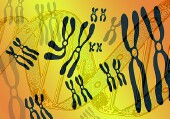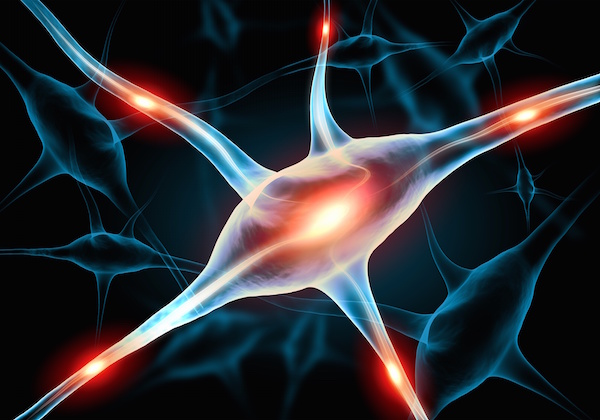
WEDNESDAY, Dec. 19 (HealthDay News) — Gene therapy could offer a safe option for treating children with a rare degenerative brain disease, a preliminary study suggests.
The condition, known as Canavan disease, is caused by a mutation in the ASPA gene, which codes for an enzyme called aspartoacylase. Without that enzyme, a chemical known as N-acetylaspartic acid (NAA) builds up in the brain and prevents nerve cells from developing their normal protective sheath. Eventually, the brain degenerates into spongy tissue with fluid-filled spaces.
Canavan disease is rare, with an estimated 600 cases worldwide, according to Paola Leone, the lead researcher on the new study and an associate professor of cell biology at the University of Medicine and Dentistry of New Jersey in Stratford, N.J.
Both parents have to carry the mutated gene for a child to be affected, and the disease is most common among people of Ashkenazi Jewish heritage.
Babies born with Canavan disease never develop normal movement and thinking abilities. They have weak and stiff muscles, suffer seizures, and have problems eating and even supporting their head. (The disorder causes the head to become unusually large.)
Some children with Canavan disease live into their teens or 20s, but most die before their 10th birthday.
“Fifteen years ago, there was no hope for these children,” Leone said.
Back in 2001, though, U.S. regulators gave researchers the go-ahead to study a gene therapy method developed by scientists at the University of North Carolina School of Medicine.
The tactic involved inserting a normal copy of the ASPA gene into a non-infectious virus. That gene-carrying virus, or vector, was then infused directly into the brains of children with Canavan disease, in an attempt to override the defective gene.
Over the course of a few years, the researchers treated 13 children in all, and about a decade later, all are still alive, Leone said.
In general, the gene therapy cut the children’s brain levels of NAA (the chemical that goes out of control in Canavan), and slowed down their brain tissue degeneration. It also boosted their quality of life, Leone and her colleagues report in the Dec. 19 issue of the journal Science Translational Medicine.
That included small improvements in the children’s muscle rigidity, sleep quality, ability to move and attentiveness. Some children started having fewer seizures.
Not all of the kids benefited equally, though, and age at treatment seems to be key.
Because no one knew how the gene therapy would work, the first several children who received it were older — about 5 years old, on average — and in a further state of brain degeneration. They showed the least improvement.
But as the trial continued, regulators let Leone’s team treat younger children; the last few were 16 months old, on average, and included a 3-month-old. It was those younger children who showed the most benefit in terms of symptoms.
“The therapy should start as early in life as possible,” Leone said.
Gene therapy, for any condition, is still experimental; no form of it is approved for use in the United States. The whole field suffered a huge setback in 1999, when a teenager participating in a clinical trial of gene therapy died from a severe immune system reaction to the cold virus used to deliver the gene.
The virus used in the current study was of a different type, considered unlikely to trigger an immune system response. None of the children had a serious immune reaction to the therapy — though one child developed a fever and another a brain abscess after the initial surgery to infuse the gene.
“The safety findings, to me, are the most important part,” said Dr. Maria Escolar, director of the program for the study of neurodevelopment in rare disorders at Children’s Hospital of Pittsburgh.
The improvements in children’s actual functioning were small, Escolar noted. And one problem, she said, is that there are no good “natural history” studies on kids with Canavan disease. That is, researchers don’t fully understand the variance in how children with the disease naturally fare.
It’s hard to know how much of the symptom improvement, and overall survival, was due to the gene therapy itself, Escolar said. Advances in how doctors care for kids’ complications, such as pneumonia, might have affected survival rates.
Still, Escolar said, “the safety findings, alone, are a huge step forward.”
Since this trial began, scientists have also made advances in the viral vectors that could be used for gene therapy. Better ones, that may not need to be directly infused into the brain, are under study in animals — and close to being studied in humans, Escolar noted.
“Now this study needs to be repeated using better vectors, along with better natural history data,” Escolar said.
Gene therapy is not the only approach to Canavan under study, said Morris Baslow, a scientist at the Nathan S. Kline Institute for Psychiatric Research in Orangeburg, N.Y.
Other research groups, he said, are trying to better understand how the chemical NAA works in the brain, and hopefully come up with other approaches to treat Canavan disease, including medications.
When it comes to gene therapy, Baslow agreed that it should start very early, soon after birth. He also said the “ideal” method would be to use a viral vector that specifically targets brain cells called oligodendrocytes — which are responsible for making the protective sheaths around nerves.
Leone agreed that that type of vector would be better. But it doesn’t exist yet.
Ultimately, a combination of therapies may be needed to best treat, or even cure, Canavan disease. “Our feeling is, in the future, gene therapy in association with medication that targets the metabolism of [brain] cells will be the cure,” Leone said.
More information
Learn more about Canavan disease from the Canavan Research Foundation.

